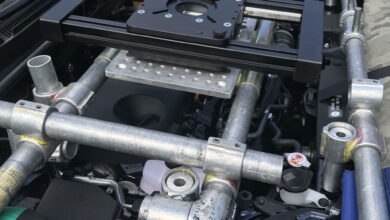Leasing Coches: Benefits, Drawbacks, and How to Make the Best Choice

Leasing a car, or “leasing coches” as it is referred to in Spanish, is an increasingly popular option for individuals and businesses alike. It offers a flexible, cost-effective alternative to purchasing a vehicle outright. This article will delve into the intricacies of car leasing, including its benefits, potential drawbacks, and considerations to help you make an informed decision.
What is Car Leasing Coches?
Car Leasing Coches is essentially a long-term rental agreement. Instead of purchasing a vehicle, you pay a monthly fee to use the car for a predetermined period, typically between two to four years. At the end of the lease term, you return the car to the leasing Coches company, although some agreements may offer the option to purchase the vehicle at its residual value.
Benefits of Leasing a Car
- Lower Monthly Payments: One of the most attractive aspects of leasing Coches is the lower monthly payments compared to financing a car purchase. Since you’re only paying for the vehicle’s depreciation during the lease term rather than its full value, the monthly cost is generally lower.
- Access to Newer Models: Leasing Coches allows you to drive a new car every few years. This means you can enjoy the latest models with the newest technology, safety features, and improved fuel efficiency without the long-term commitment.
- Reduced Maintenance Costs: New cars are less likely to require significant repairs, and many leases include maintenance packages that cover routine services, making it easier to manage expenses.
- No Resale Hassle: At the end of the lease, you simply return the car. There’s no need to worry about selling or trading in your vehicle, which can save time and reduce stress.
- Tax Benefits for Businesses: Businesses can often deduct lease payments as a business expense, which can offer significant tax advantages.
Potential Drawbacks of Leasing
- Mileage Restrictions: Leases typically come with mileage limits, often between 10,000 to 15,000 miles per year. Exceeding these limits can result in hefty penalties, so it’s crucial to consider your driving habits before leasing.
- No Ownership Equity: When you lease a car, you don’t own it. At the end of the lease term, you have no equity in the vehicle, unlike with a financed purchase where you own the car outright after the loan is paid off.
- Potential for Extra Fees: Lease agreements often include fees for excess wear and tear, early termination, and other charges that can add up if you’re not careful.
- Long-Term Cost: While monthly payments are lower, the long-term cost of leasing Coches can be higher if you continually lease new vehicles. Over time, purchasing a car and keeping it for several years can be more economical.

Key Considerations Before Leasing
- Determine Your Needs: Assess your driving habits, lifestyle, and financial situation to determine if leasing Coches is the right option for you. If you drive a lot or prefer to own your vehicle, purchasing might be a better choice.
- Understand the Terms: Carefully read and understand the lease terms, including mileage limits, maintenance responsibilities, and potential fees. Make sure you know what you’re agreeing to before signing the contract.
- Negotiate the Lease: Just like with purchasing a car, you can negotiate the terms of a lease. This includes the monthly payment, the interest rate (often called the money factor), and the purchase option price at the end of the lease.
- Consider Gap Insurance: Since leased cars can depreciate quickly, consider gap insurance to cover the difference between what you owe on the lease and the car’s value in case of an accident or theft.
- Plan for the End of the Lease: Think about what you want to do at the end of the lease term. Do you want to lease another car, purchase the current leased vehicle, or explore other options?
Leasing vs. Buying: A Comparative Analysis
To better understand whether Leasing Coches or buying a car is right for you, it’s essential to compare the two options side by side.
- Initial Costs: Leasing Coches generally requires a lower down payment compared to buying. However, some leases might require a higher initial payment known as a “capitalized cost reduction” or a down payment to lower the monthly payments.
- Monthly Payments: Lease payments are typically lower than loan payments because you’re only paying for the car’s depreciation during the lease term, not the entire purchase price.
- Long-Term Costs: While leasing Coches can be cheaper in the short term, buying can be more cost-effective in the long run. Once you’ve paid off the loan, you own the car and no longer have monthly payments.
- Vehicle Ownership: Leasing Coches doesn’t offer ownership equity. When you buy a car, you build equity over time and can sell or trade in the vehicle when you’re ready for a new one.
- Flexibility: Leasing Coches offers flexibility with shorter terms, allowing you to drive newer models more frequently. Buying a car ties you to the vehicle longer, which can be beneficial if you prefer to keep cars for many years.
The Process of Leasing a Car
Leasing Coches a car involves several steps, from selecting the right vehicle to signing the lease agreement. Here’s a step-by-step guide to help you navigate the process:
- Choose the Right Car: Consider your needs, budget, and preferences when selecting a car. Research different models and their lease offers.
- Check Your Credit Score: A good credit score can help you secure better lease terms. Check your credit report and address any issues before applying for a lease.
- Shop Around: Visit multiple dealerships to compare lease offers. Pay attention to the lease terms, including the monthly payment, down payment, mileage limits, and lease duration.
- Negotiate the Terms: Don’t be afraid to negotiate the lease terms. Focus on the capitalized cost (the car’s price), the money factor (interest rate), and any fees.
- Review the Lease Agreement: Carefully review the lease agreement before signing. Make sure you understand all the terms and conditions, including fees, mileage limits, and maintenance responsibilities.
- Sign the Lease and Take Delivery: Once you’re satisfied with the terms, sign the lease agreement and take delivery of your new car. Make sure you understand the dealership’s return process at the end of the lease.
Tips for Managing a Car Lease
- Stick to the Mileage Limit: Keep track of your mileage to avoid excess mileage charges. Consider your daily commute and any planned road trips.
- Maintain the Car: Follow the manufacturer’s maintenance schedule and keep the car in good condition. This can help avoid excess wear and tear fees at the end of the lease.
- Keep Records: Maintain records of all maintenance and repairs. This can be useful if there’s a dispute about the car’s condition when you return it.
- Prepare for the End of the Lease: As the end of the lease term approaches, decide whether you want to lease another car, purchase the current leased vehicle, or explore other options. Schedule an inspection to identify any potential charges for excess wear and tear.
Conclusion Leasing Coches
Leasing coches can be a great option for those who want to drive new cars frequently, enjoy lower monthly payments, and avoid the hassles of selling a used vehicle. However, it’s essential to understand the terms, potential costs, and your own driving habits before making a decision. By carefully considering your options and managing your lease effectively, you can enjoy the benefits of leasing Coches while minimizing any drawbacks.



